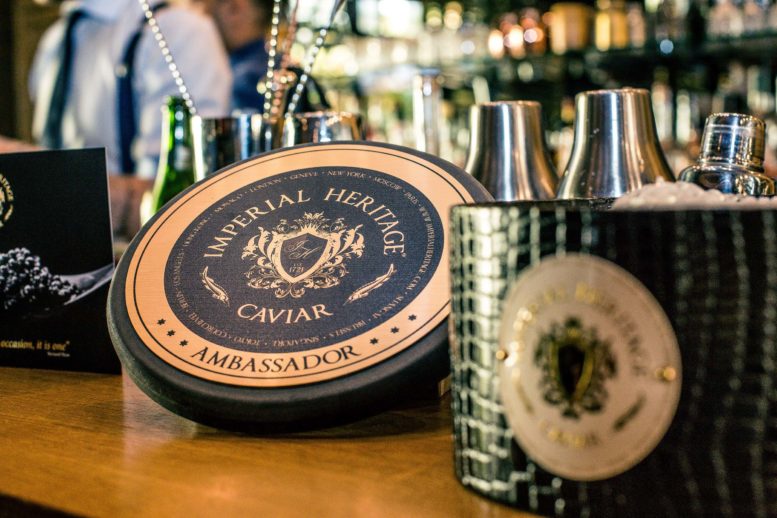Belgian caviar house, Imperial Heritage, recently obtained Friend of the Sea’s certification for aquaculture. Breeding activities of the Danube Sturgeon (Acipenser gueldenstaedtii) and the Siberian Sturgeon (Acipenser baerii) take place in Italy, and have been found compliant with Friend of the Sea sustainable aquaculture criteria, some of which are: (a) No impact of the aquaculture site on critical habitat; (b) Compliance with wastewater parameters; (c) No use of harmful anti-foulants;(d) No use of growth hormones; (e) Energy efficiency; and (f) Social accountability.
Imperial Heritage is a family-owned company founded by Koenraad Peter Colman, based in Mol, Antwerp in Belgium, and distributes their selection of Sturgeon caviars in Europe, South Africa, and the USA.
Introducing her company, Elisabeth Colman said, “Our house stands for tradition and origin, holding on to the classic environment for the Sturgeon and the old-school way of preparing and selecting the world’s best caviars. We are very proud of having received Friend of the Sea’s certification, a very important label of recognition as demonstration of our efforts to respect nature’s balance while guaranteeing the finest selection of the most praised caviars in the world.” Welcoming Imperial Heritage, the Director of Friend of the Sea, Paolo Bray stated, “Thanks to the spread of sustainable practices applied to Sturgeon culture, both farmers and distributors are contributing to protect and repopulate Sturgeon specimens in Italian rivers and lakes.”
Imperial Heritage selects environmentally sustainable caviar from the most prized Sturgeon species. The company supervises the entire course of life of the fish, from the very beginning until maturity under a clean culture environment, without any risk of secondary undesired tastes of the fish or the eggs. The method of preparation involves only pure caviar that is mildly salted —Malossol, a Russian term for “little salt” – under 3.7 % salt.
The caviar is packed immediately after preparation, in traditional tins or vacuum. This traditional packing allows the caviar to mature in a natural manner. This also enables Imperial Heritage to offer exceptionally fresh caviar, between a few days and a few weeks young. The breeding process, as well as the treatment and the preparation of the fish, is carried out by their Russian great masters of caviar, who have a lifelong experience in traditional preparation of the very best caviar.
Caviar is basically the roe (fish eggs, also sometimes referred to as “berries” or “pearls”) of the female Sturgeon, a large migratory fish that can grow to over 3000 lbs. The Sturgeon has roamed the cold waters of the northern hemisphere for over 250 million years. Sturgeon is found mainly in the Caspian Sea, which reaches the shores of the two major caviar-producing countries in the world, Russia and Iran, but is also found in the Black Sea, in some parts of the Pacific Northwest and South Atlantic regions of North America, and is common in the big lakes and rivers in Europe. Although it is a saltwater fish, it spawns and lays eggs in freshwater.
The British kings of the Middle Ages reserved all the Sturgeon for their own consumption, knighted it the “Royal Fish,” and was solely for royalty. However, it was the Persians who first prepared and savored Sturgeon roe. The word “caviar” actually comes from the Persian word “khav-yar” which means “cake of strength” or “cake of power” because the people of Persia attributed many medicinal powers to caviar. The Persians collected the fish eggs from the Kura River, although the tradition of salting fish roe for consumption originated in China, where carp eggs were prepared in this manner. The first known record of caviar dates back to the Greek scholar Aristotle. In the 4th Century B.C., Aristotle described this delicacy as the “eggs of the Sturgeon, heralded into banquets amongst trumpets and flowers.” However, it was the Russian Tsars that catapulted the Sturgeon caviar into the world of luxury.
